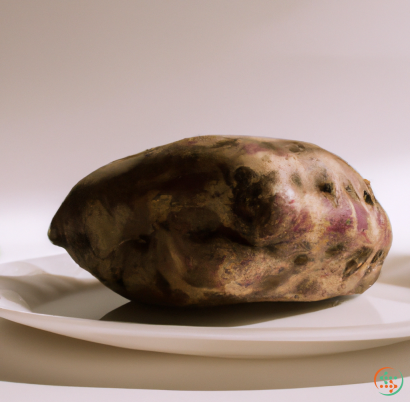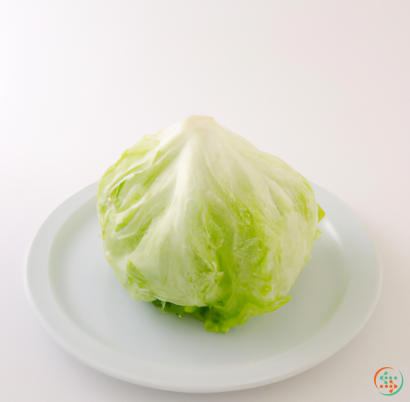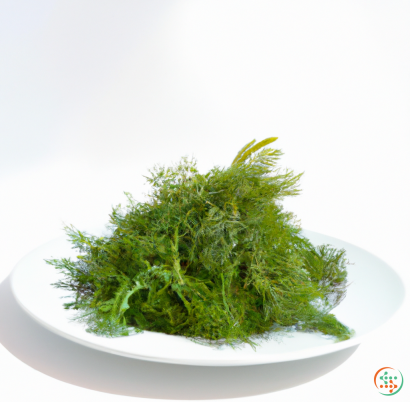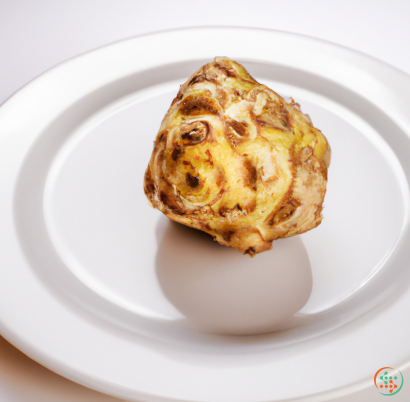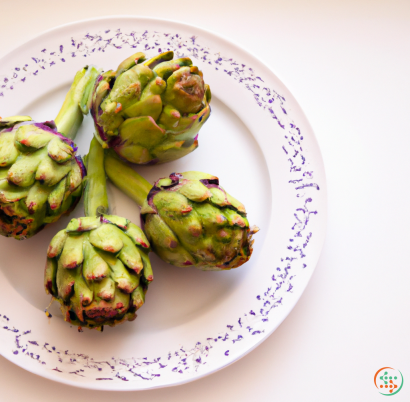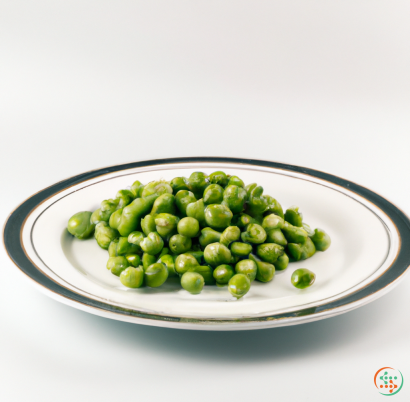Garlic
Garlic, scientifically known as Allium sativum, is a bulbous herb and an extremely versatile ingredient featured in most cuisines across the world. Garlic has been used for centuries as an herbal remedy to treat various conditions including digestive disorders, and to top it off, garlic also provides numerous health benefits. But what is it and how did it become such a staple ingredient?
Garlic is a member of the lily family and closely related to onions, leeks, chives, and shallots. It grows in clusters at the end of a central stem and is composed of individual bulbs. Each bulb is made up of multiple cloves, or small segments, which are covered in a papery skin. To get access to the cloves within a bulb of garlic, simply squeeze it and it will snap open. In terms of flavor, garlic is extremely pungent, with a mild sweetness, and aroma.
Garlic is native to Central and Eastern Asia, but can now be found across the world. It has a long history of cultivation that likely dates back at least 10,000 years, with some sources suggesting as much as 6,000 BC as the time where Iran and Iraq began cultivating garlic. Since then, the use of garlic has spread throughout the world and is now a popular ingredient in many different cultures.
The popularity of garlic is largely attributable to the multiple health benefits that it provides. Health experts have found that garlic can lower cholesterol levels and reduce high blood pressure, so it can act as a natural remedy for cardiovascular diseases and plaque buildup. Other research has demonstrated that taking garlic regularly can offer protection from certain types of cancer, particularly gastrointestinal cancers.
Beyond these health benefits, garlic is also known to stimulate the immune system, reduce inflammation, and resist infection. In addition to this, some studies show that garlic may help to slow the aging process, making it an extremely beneficial ingredient for people of all ages.
Along with its health benefits, the flavor of garlic is one of the main reasons why it has become such a popular ingredient. Garlic has a complex flavor that can vary depending on various factors such as the way it was cooked, the soil it was grown in, and even how fresh it was. Generally speaking, garlic has a mild sweetness that is accompanied by a kick of heat.
You can use garlic in a wide range of dishes and it’s most often cooked or consumed raw. Whether it’s minced, chopped, or pureed, garlic can add a unique flavor to almost any dish. Additionally, it’s an ideal seasoning for soups, sauces, marinades, salad dressings, and sautéed vegetables.
Garlic is a culinary herb that is beloved by many around the world. Not only does it offer plenty of health benefits but it also brings a complex combination of flavors that can improve the taste of countless dishes. For these reasons, garlic remains a vital part of many different cuisines and is sure to remain a staple ingredient for generations to come.
Have you ever wondered how garlic reaches the dinner plate? Whether you’re using garlic in a marinade, grilling whole cloves, preparing a pesto or simply chopping the bulb into its most recognizable form, the journey of garlic begins long before it winds up in your kitchen. Garlic, like most vegetables and herbs, goes through an entire process of production, harvesting, curing and delivery before landing ethically on our dinner plates.
Garlic is a member of the Allium family, also known as the onion family or Alliaceae, with over 600 species found worldwide. Related to onions, shallots, leeks and chives, garlic has been present in cultures around the world for centuries, and is believed to have originated in Central Asia. Now cultivated in the Imerese region of Italy and in the USA’s Gilroy region (ironically known as the garlic capital of the world), garlic is consisted of a bulb, which consists of a number of cloves that are held together by a fibrous skin.
Creating Garlic
Garlic is planted in three stages in order for the bulbs to mature in time for a farmer to harvest. It normally takes garlic from 90-200 days from when it is planted to when it is harvested. Many families have handed down the secrets of their garlic farming techniques over generations, using a combination of organic and biodynamic practices.
Starting in late autumn, farmers will use a ploughing technique called cover planting, which is a shallow furrowing of the soil to introduce small cloves into the wild. After planting, garlic will settle in over the winter and as the climate warms in spring, the leaves of garlic begin to emerge.
The seed heads begin to un-hull as the garlic moves closer to maturity, typically in the early summer months. During the summer months, garlic farmers will prune the garlic to promote the ripening process of the bulb, as well as water and mulch to ensure the soil is properly nourished. Throughout this time, garlic farmers pay close attention to the ecosystem of the garlic plants, ensuring the location is well-suited for garlic production.
Harvesting garlic
Once the garlic is ready for harvesting, the technique can vary greatly from farm to farm and from region to region. In some regions, farmers will pull the garlic from the ground by hand and then lay each plant out in the sun for proper drying. Other farmers will use machinery to harvest their garlic, like combine harvesters.
Once the garlic is pulled from the ground, the bulb is separated from the garlic stems and leaves, leaving the bulb itself and the roots intact. After the bulb is pulled, it is hung in the sun or placed in trays with plenty of fresh air to dry out and lose its moisture. Garlic will dry in roughly two weeks during the summer, but the curing process may take up to two months when done during the cooler months.
Curing Garlic
While the curing process is identical no matter where the garlic is grown, each region uses its own techniques to cure the garlic. In some regions, the farmer will lay out the garlic in the sun for weeks at a time for the bulbs to naturally dry out and cure, but most commonly the bulbs are now cured in a more controlled environment.
At this point, the garlic braid is put together. The garlic braid is when the garlic stems and leaves are bundled together and hung in an orderly fashion, usually in a cool dry shed or garage. Farmers in certain regions of India, like Assam, use the traditional technique of curing the garlic by spreading it out in a single line, covered by long woven strings of the plant’s leaves, grassroots and stalks.
Once garlic has been completely cured, the bulbs are ready for shipping. Garlic can be sent in many ways, but the most common is by air or sea freight. Bulbs that have been properly cured and stored can last between six to twelve months in a cool and dark environment.
Preparing and Serving Garlic
After reaching their destination, the garlic bulbs are later packaged and stored in a cool, dark place until they are ready to use. In the kitchen, garlic is widely used for flavor and spice and is one of the most ubiquitous and widely used kitchen ingredients across cultures. Garlic has been used by practically every cuisine, in all forms of dishes-whether it be in a marinade, a sweet or savory topping or a main ingredient - it hangs around in culinary history, showing no signs of fading.
Whether you’re using garlic in a grilled vegetable dish or experimenting with a vegan garlic Alfredo sauce, you now understand the complexity of how garlic is grown, harvested, cured and prepared before reaching your dinner table. Cooking with quality garlic will not only help your dish come alive, but it will also make you feel a tad better knowing that healthy practices were involved in its production.
| Beta-Carotene | 0.005 mg | |
| Vitamin E | 0.08 mg | |
| Vitamin K | 0.0017 mg | |
| Vitamin C | 0.0312 grams | |
| Vitamin B1 | 0.2 mg | |
| Vitamin B2 | 0.11 mg | |
| Vitamin B3 | 0.7 mg | |
| Vitamin B4 | 0.0232 grams | |
| Vitamin B5 | 0.6 mg | |
| Vitamin B6 | 0.00124 grams | |
| Vitamin B9 | 0.003 mg |
| Calcium | 0.181 grams |
Daily Value 1.3 g
|
| Iron | 0.0017 grams |
Daily Value 0.018 g
|
| Magnesium | 0.025 grams |
Daily Value 0.4 g
|
| Phosphorus | 0.153 grams |
Daily Value 1.25 g
|
| Potassium | 0.401 grams |
Daily Value 4.7 g
|
| Sodium | 0.017 grams |
Daily Value 2.3 g
|
| Zinc | 0.00116 grams |
Daily Value 0.011 g
|
| Copper | 0.3 mg |
Daily Value 0.9 mg
|
| Manganese | 0.00167 grams |
Daily Value 0.0023 g
|
| Selenium | 0.0142 mg |
Daily Value 0.055 mg
|
| Tryptophan | 0.066 grams | |
| Threonine | 0.157 grams | |
| Isoleucine | 0.217 grams | |
| Leucine | 0.308 grams | |
| Lysine | 0.273 grams | |
| Methionine | 0.076 grams | |
| Cystine | 0.065 grams | |
| Phenylalanine | 0.183 grams | |
| Tyrosine | 0.081 grams | |
| Valine | 0.291 grams | |
| Arginine | 0.634 grams | |
| Histidine | 0.113 grams | |
| Alanine | 0.132 grams | |
| Aspartic Acid | 0.489 grams | |
| Glutamic Acid | 0.805 grams | |
| Glycine | 0.2 grams | |
| Proline | 0.1 grams | |
| Serine | 0.19 grams |
| Total Sugars | 1 grams |
per 100g
|
| Palmitic acid (16:0) | 0.09 grams |
|
| Total Saturated fatty acids: | 0.09 g | |
| Oleic acid (18:1) | 0.01 grams |
|
| Total Monounsaturated fatty acids: | 0.01 g | |
| Linolenic acid (18:3) | 0.02 grams |
|
| Linoleic acid (18:2) | 0.23 grams |
|
| Total Polyunsaturated fatty acids: | 0.25 g | |

